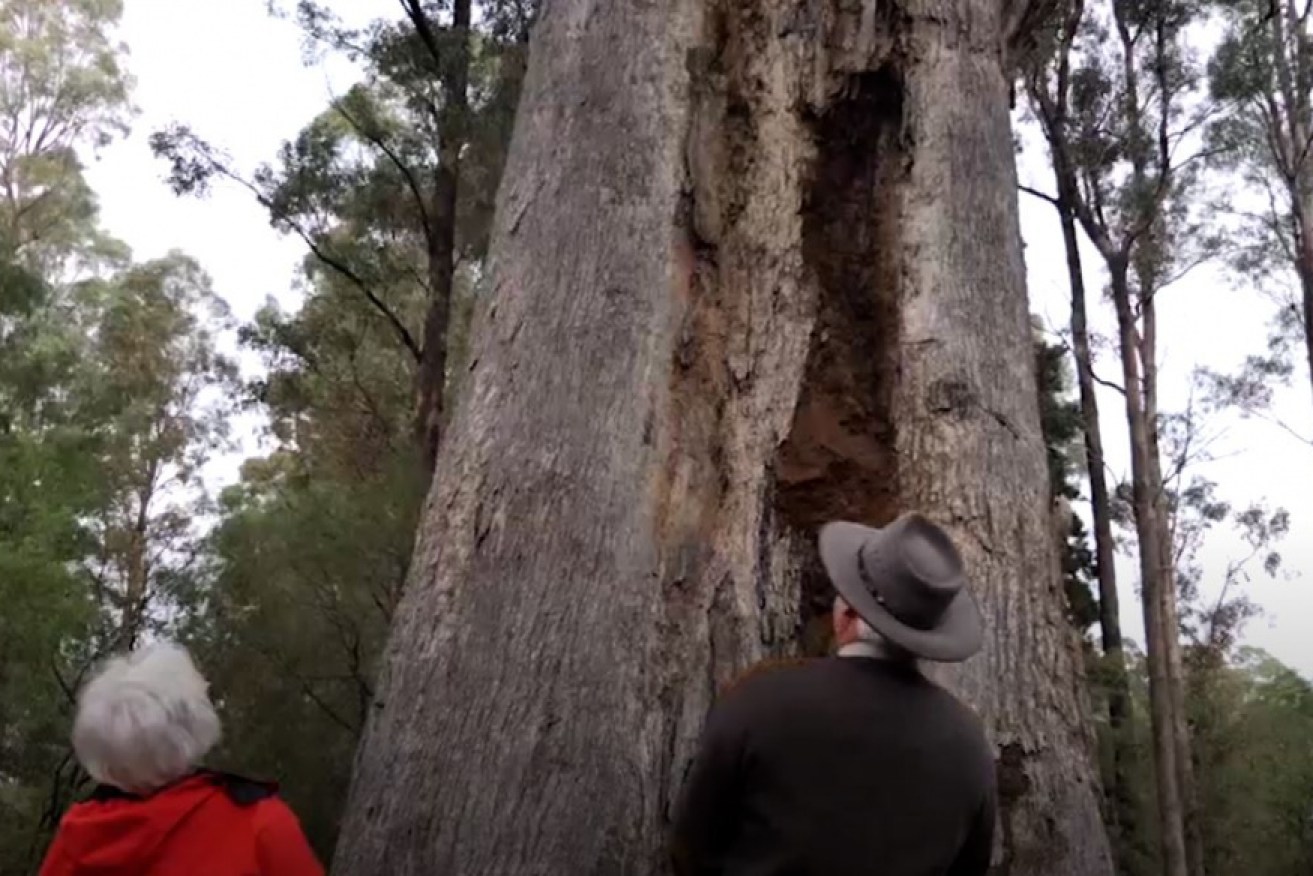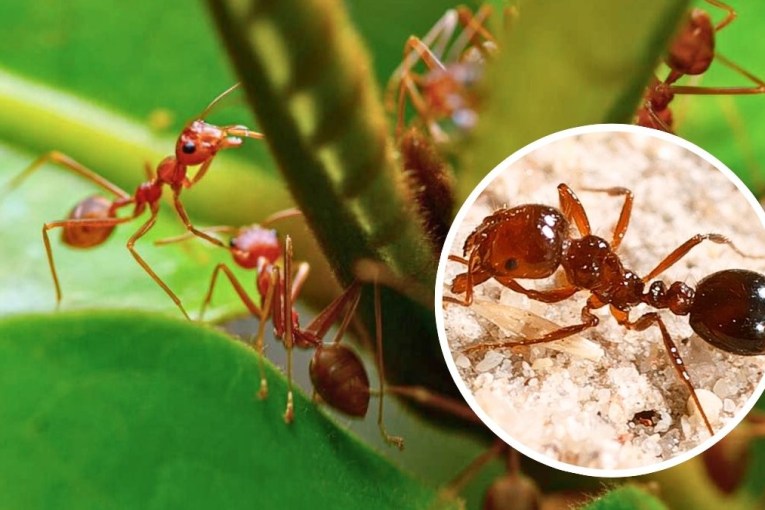Only three per cent of this rare Australian forest remains, but volunteers are working to save it

Volunteers have started a campaign to save an iconic tuart forest. Photo: ABC News
Evelyn Taylor stands in silence as she strains her neck, attempting to see the very tips of a 600-year-old tuart tree.
The tree’s branches stretch out for metres and are a mighty sight among its much younger siblings.
For decades, timber workers strode through this forest searching for smaller and easier tuarts to cut down and harvest.
But Mrs Taylor is here for a much different purpose – she is determined to save this tree, and the forest it calls home.
“I would think if this forest is lost, then I have failed as a human being, really … it’s as serious as that.”

Evelyn Taylor and Des Donnelly with a 600-year-old tuart tree. Photo: Kate Stephens
The tuart is unique to Western Australia and only grows along a small strip of the state’s coastline.
This forest once spanned more than 110,000 hectares, from north Perth to south of Busselton.
But after many years of clearing for farming, urbanisation and logging, only 3500 hectares remain near Ludlow in the outh West.
Over the next five years, Mrs Taylor and a group of volunteers aim to restore 180 hectares of the forest by planting more than 100,000 seedlings.
“To see a forest declining like this is really just very upsetting to me,” she said.
Tall, beautiful trees
Tuarts were first logged in the 1830s, when European settlers stumbled upon the large, open forest.
“They were big, tall trees, beautifully formed and they were precious hardwood on the world scene in those days,” said Des Donnelly, vice-chairman of the Ludlow Tuart Forest Restoration Group.
Due to the timber’s strength and durability, the wood was sent across the world to be used for shipbuilding.
“It had a good name very early on, and the early settlers used those trees to start the economy,” he said.

These tuart seedlings will take about 40 years to mature. Photo: Kate Stephens
Old but not forgotten
A settlement at the edge of the forest was built to house forestry workers and, at times, also included a mill and a forestry school.
Tuart logging ended in 1975, but it wasn’t until 2014 that the entire settlement was abandoned, leaving the site in disrepair.
Mr Donnelly said the historical value of the settlement would draw tourists and keep interest in the forest alive.
“It’s the first real settlement that was built [in WA] and it is the last one standing, so it’s got huge heritage value and we must respect that,” he said.

This old forestry building is part of the Ludlow settlement. Photo: Kate Stephens
The volunteers hope to restore some of the rundown buildings to use for an education centre and museum for tourists.
“There’s thousands of cars that pass here every day, but people drive through this forest at 60 to 80 kilometres per hour and they don’t really understand what they are looking at,” Mr Donnelly said.
Prisoners lend a hand
Trying to restore the buildings while planting thousands of seedlings is a huge task – but they are not without help.

Shane Dowell says prisoners working on the project have learnt life skills. Photo: Kate Stephens
Work-release teams from the Bunbury Regional Prison have been among other community groups lending a hand.
Shane Dowell, assistant superintendent at the prison, said the inmates had helped create a fence around the seedlings.
“If we don’t put the rabbit-proof fencing in when they go to plant the tuart trees, the rabbits will eat the seedlings,” he said.
“Then it will take a number of years for us to grow seeds and replant again.”
The work benefits the forest and the prisoners.
“They feel worthwhile, build up their self esteem and also their work ethic,” Mr Dowell said.

Prisoners are helping to build a fence around the seedlings. Photo: Kate Stephens
Next generation of planters
The wet June weather in southern WA has provided the perfect soil temperament to plant tuart seedlings.
Thirteen-year-old Bella Burgemeister, along with many other volunteers, braved the torrential rain to help plant.
She said while her generation did not clear the trees, it was still their responsibility to help regenerate them.
“It is so important that it is a multigenerational movement that helps fix all this, because it is not just one generation that has done this – it is multiple, so we need multiple to fix this.”

Bella Burgemeister says all generations need to help. Photo: Kate Stephens
In 40 years’ time, the seedlings will reach maturity and create a closed-canopy tall tuart forest.
Mr Donnelly said he knew that despite all his efforts, it was unlikely he would be around to see the seedlings reach their potential – but that is not slowing him down.
“It’ll take us 100 years to get this back, but if we don’t start now, we may never do it.”
–ABC








